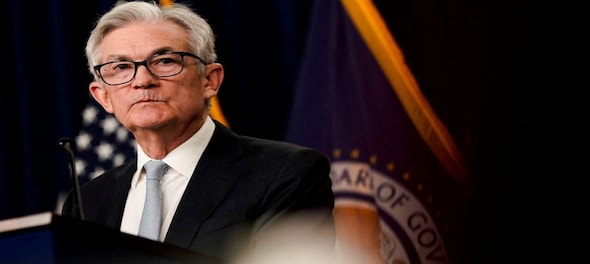
As the world gears up for the US Federal Reserve's policy announcement tonight (November 1), major US stock futures like the Dow Jones Industrial Average, S&P 500, and Nasdaq were all trading lower.
According to a CNBC Fed Survey, there's an expectation that the Federal Reserve will maintain its current rates at 5.25-5.50% and stick to its ‘higher for longer’ mantra. They expect no rate cuts at least until the third quarter of 2024. The fed funds rate, a key benchmark for short-term lending costs, is now projected to end 2024 at 4.6%, up from an earlier forecast of 3.8%.
What does a higher for longer stance mean for global markets and how can it influence the financial market from equities to currency?
The term 'higher for longer' refers to a monetary policy where interest rates remain elevated for an extended period. This is in contrast to short-term rate hikes followed by quick reductions. The idea is to manage inflation and economic growth over a longer term.
A 'higher for longer' policy in the US could lead to sustained foreign investment shifts and increased market volatility.
Impact on 10-Year Treasury Yields
A 'higher for longer' stance by the Fed could have a significant impact on 10-year Treasury yields. Typically, long-term yields rise when the market anticipates a prolonged period of higher interest rates. The anticipation has already led to a spike in 10-year yields to nearly 5%, a 16-year high.
In October, Fed Vice Chair Philip Jefferson told a conference that he would “remain cognizant of the tightening in financial conditions through higher bond yields” in assessing “the future path of policy,” echoing similar comments from other policymakers in recent days.
Global Markets on Edge
The Fed's policy doesn't just affect the US; it has global repercussions. Emerging markets are particularly sensitive to US monetary policy. A 'higher for longer' stance could lead to capital outflows from these markets as investors seek higher returns in the US.
Implications for the Indian Market
The Indian market is not immune to shifts in US monetary policy. A 'higher for longer' stance by the Fed could lead to a stronger US dollar, putting pressure on the Indian rupee. This, in turn, could affect India's import bills and contribute to inflation. Additionally, sectors like IT and pharma, which earn revenues in dollars, could see mixed effects. While a stronger dollar could boost earnings, the overall uncertainty could lead to market volatility.
The spike in yields can also impact equities, as prominent investor Adrian Mowat pointed out in an interview with CNBC-TV18. Mowat said he will closely watch the US bond market to see if they break above 5%. "If we get that comfort over the next month or so, then I think you will start to add to risk assets and that would include the Indian market, but for now I would be cautious.”
Veteran global investor Mark Mobius of Mobius Capital Partners also had a similar view. “People have got to be ready for a correction along the way because a lot of people will look at the market and say, Hey, why should I go into stocks when I can get 5% for my money?” he told CNBC-TV18 in an exclusive chat.
Oil Markets Feel the Heat
Higher interest rates usually strengthen the US dollar, making dollar-denominated commodities like oil more expensive for foreign buyers. Interest rate hikes aimed at taming inflation also slow economic growth and reduce oil demand. A 'higher for longer' policy could sustain this trend, potentially dampening global demand for oil and affecting oil-producing nations.
The Golden Dilemma
Gold often serves as a hedge against inflation and currency fluctuations. A prolonged period of higher interest rates could boost the US dollar, making gold less appealing as an alternative investment. However, if the 'higher for longer' stance leads to concerns about economic stability, gold could regain its lustre as a safe haven.
Gold started November on a softer note ahead of the Fed policy after concerns over the Middle East conflict boosted the safe-haven asset's prices above $2,000 an ounce last month. Spot gold fell 0.2% to $1,978.36 per ounce by 0351 GMT on Wednesday, while U.S. gold futures dropped 0.4% to $1,987.00.
The Federal Reserve's potential 'higher for longer' stance has far-reaching implications, affecting everything from Treasury yields to global commodity markets. As the world waits for the Fed's announcement, market participants will be keenly watching for any signs that could indicate the future trajectory of global financial markets.
First Published: Nov 1, 2023 4:22 PM IST
Check out our in-depth Market Coverage, Business News & get real-time Stock Market Updates on CNBC-TV18. Also, Watch our channels CNBC-TV18, CNBC Awaaz and CNBC Bajar Live on-the-go!


Lok Sabha Election 2024 Phase 5: 24% voter turnout recorded till 11 am, highest in Bengal at 33%
May 20, 2024 10:30 AM
Lok Sabha Election 2024: Is it mandatory for employers to give paid holiday on voting day? | Explained
May 20, 2024 10:07 AM
Lok Sabha Elections 2024 | How critical is Phase-5 for both NDA and I.N.D.I.A
May 20, 2024 7:30 AM

